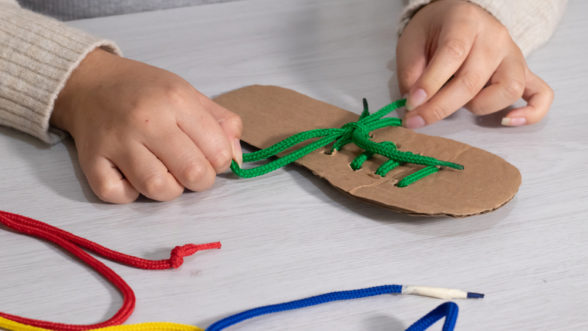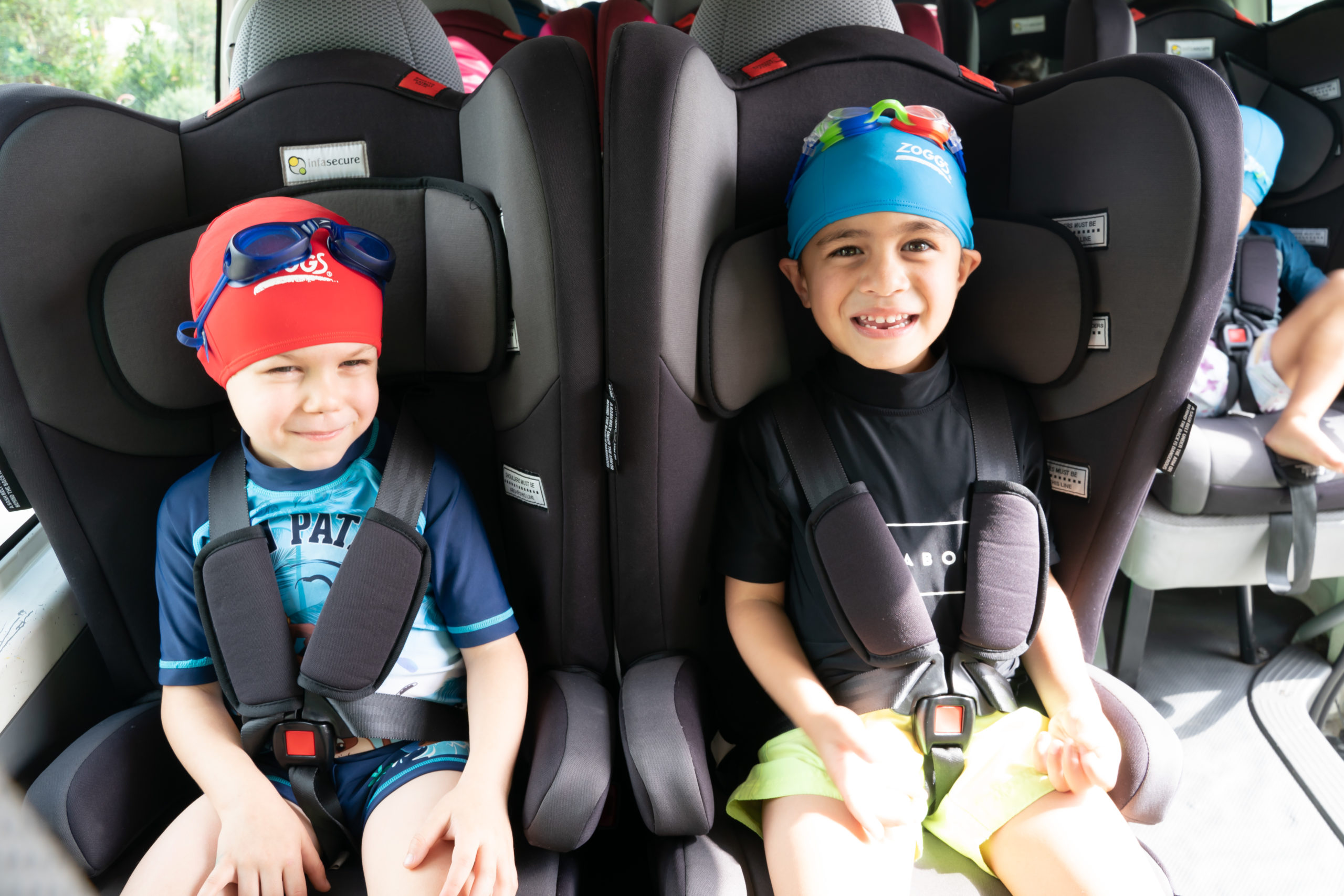As parents, the safety of our children is everything – especially when they’re in the car. Did you know that, on average, we spend a total of 4.3 years in the car? It makes sense to ensure your child is as safe as possible, and the seat they sit in plays an enormous role. Consider this your ultimate guide to child car seat safety.
Car restraints are imperative to improve your child’s safety on the road. From car seats to seatbelts, it is important to know what to look for when purchasing and fitting these devices.
For car seats, make sure it complies with the current Australian Standards – especially if it is a hand-me-down – and is the correct size for your child and vehicle. You can read the national best practice guidelines right here.
When it comes to sitting safely in a car, 7 is the magic number – that’s the age that your child can sit in any seat position in a vehicle.
In saying that, it is important to note that child restraint laws are based on age (rather than by height or weight) because research indicates that this is easier for parents to follow and will result in the smallest number of children being inappropriately restrained. A child’s height and weight are still important to consider when making a choice about the right restraint or booster seat for your child.
Child car restraint regulations for children differ from state to state; read on to find out the rules where you live.
When can a child sit in the front seat: NSW?
- Under 6 months: Children up to the age of six months must be secured in an approved rearward facing restraint.
- 6 months to 4 years: Children aged from six months old but under four years old must be secured in either a rear or forward-facing approved child restraint with an inbuilt harness. Children under four years old cannot travel in the front seat of a vehicle with two or more rows.
- 4-7 years: Children aged from four years old but under 7 years old must be secured in a forward-facing approved child restraint with an inbuilt harness or an approved booster seat. They cannot travel in the front seat of a vehicle with two or more rows, unless all other back seats are occupied by children younger than 7 years in an approved child restraint or booster seat
- 7-16 years: Children aged from 7 years old but under 16 years old who are too small to be restrained by a seatbelt properly adjusted and fastened are strongly recommended to use either a forward-facing seat with an in-built harness for older children, an approved booster seat, or an approved child safety harness in conjunction with the vehicle’s seatbelt.
It is also important to note that children in booster seats must be restrained by a suitable lap and sash type approved seatbelt that is properly adjusted and fastened, or by a suitable approved child safety harness that is properly adjusted and fastened.
If your child is too small for the child restraint specified for their age, they should be kept in their current child restraint until it is safe for them to move to the next level.
When can a child sit in the front seat: VIC?
- Under 4 years: Children under 4 years old must travel in a rear facing or forward-facing child restraint.
- 4-7 years: Children aged between 4 and 7 years must travel in a forward-facing child restraint or a booster seat.
- 7-16 years: Children aged between 7 and 16 are required to use a booster seat or adult seat belt when travelling in a vehicle.
When can a child sit in the front seat: WA?
- Under 6 months: Children aged 0 to 6 months must be restrained in a rear-facing child restraint (e.g., infant capsule).
- 6 months to 4 years: Children aged 6 months to under 4 years must be restrained in either a rear or forward-facing child restraint with in-built harness.
- 4-7 years: Children aged 4 years to under 7 years must be seated in either a forward-facing child seat or booster seat restrained by a fastened seat belt or child safety harness. They can travel in the front seat if all other rear seats are filled with passengers aged under 7.
- 7-16 years: Children aged 7 years to 16 years must be in either a suitable child seat or a seatbelt. Children 7 years and over can be restrained in an adult seat belt or booster seats.
It is also important to note that children aged under 7 years must not be in the front row of seats if the vehicle has two or more rows of seats. When riding in a bus or taxi, if there is no suitable approved child seat available, children under the age of 7 must not be in the front row of seats where the bus or taxi has two or more rows of seats.
When can a child sit in the front seat: QLD?
- Under 6 months: Babies up to 6 months of age must be in an approved rear-facing restraint that is properly fastened and adjusted. It is recommended babies stay in a rear-facing restraint for as long as their size allows. You can hire a rear-facing restraint from Kidsafe Queensland.
- 6 months to 4 years: Babies and children from 6 months and up to 4 years must be in an approved child restraint that is properly adjusted and fastened. The child restraint may be rear-facing or forward-facing with a built-in harness. However, it is recommended that babies and children stay in a rear-facing restraint for as long as their size allows.
- 4-7 years: Children aged 4 years and up to 7 years may be in an approved child restraint that is forward-facing with a built-in harness that is properly adjusted and fastened. They may also be in an approved booster seat secured with an adult lap-sash seatbelt or a fastened and adjusted H-Harness. However, research has indicated that the booster seat with a H-Harness option provides a lower level of safety in some types of crashes.
- 7-16 years: Children who are 7 years and over may sit in a standard seat with an adult seatbelt, or an approved booster seat/cushion secured with an adult lap-sash seatbelt or an H-Harness. Or, they may be in an approved child restraint that is forward-facing with a built-in harness that is properly adjusted and fastened.
When can a child sit in the front seat: SA?
- Under 6 months: Must use an approved rear facing infant restraint and must not travel in the front seat of a vehicle that has two or more rows of seats
- 6 months to 4 years: Must use either an approved rear facing infant restraint or a forward-facing child safety seat with an inbuilt harness and must not travel in the front seat of a vehicle that has two or more rows of seats.
- 4-7 years: Must use either an approved forward-facing child safety seat with an inbuilt harness, or a booster seat with a properly fastened and adjusted lap-sash seatbelt or child safety harness. They must not travel in the front seat of a vehicle that has two or more rows of seats, unless all the other seats are occupied by children who are under 7 years.
- 7-16 years: Must use either an approved child restraint (a child safety seat or booster seat depending on their size), or a seatbelt that is properly adjusted and fastened.
Please note that if a child is too tall or heavy for the restraint specified for their age, they may use the restraint specified for the next age group. Alternatively, if a child is too small to advance into the restraint for their age, they should remain in the restraint specified for the previous age group until they have outgrown that restraint.
When can a child sit in the front seat: NT?
- Under 6 months: Rear facing restraint – e.g. baby capsule. This must not be in the front seat of a vehicle with two or more rows of seats
- 6 months to 4 years: Rear-facing or forward-facing restraint. This must not be in the front row of a vehicle with two or more rows of seats
- 4-7 years: Forward-facing restraint or booster seat. This can only sit in the front seat of a vehicle with two or more rows when all other seats are occupied by younger children in an approved child restraint
- 7-16 years: Adult seatbelt or a booster seat
When can a child sit in the front seat: ACT?
- Under 6 months: Babies under the age of six months must be restrained in an approved rear facing child restraint.
- 7 months to 7 years: Children over the age of 7 months but under 7 years must be in an approved child restraint or booster seat and not be seated in the front seat of the car.
- Over 7 years: Children over 7 years can be seated in a suitable child restraint or a normal passenger seat with a seat belt.
When can a child sit in the front seat: Tasmania?
- Under 7 years: Children from birth to 7 years old must be in a correctly fitted car seat.
- 7 years to 16 years: Children from 7 years to 16 years old must continue to use a correctly fitted car seat or seatbelt depending on their size.
Can your child use an adult seatbelt?
Beyond their age, it is useful to check for the following before determining whether your child can use an adult seatbelt rather than a child car restraint:
- Do your child’s knees bend in front of the edge of the seat?
- Can your child sit with their back against the vehicle seat back?
- Does the sash sit correctly across the middle of the shoulder with the lap belt sitting low across the hips and touching the thighs?
Choosing the right child car restraints
It is important to follow the correct procedures when choosing your child car restraint. This includes, but is not limited to:
- Reading manufacturer’s child seat instructions
- Locating the anchor points in your vehicle
- Getting the seat fitted by professionals.
It is important to choose the right child car restraint based on the requirements in your state, and by evaluating how each seating option protects the child. The seating options include:
- A rear forward child seat
- Forward facing child car seat
- Booster seat
- H Harness
having a line-up of podcasts on hand is a great way to keep the kids entertained in their seat. Here are our top ten podcast recommendations.

